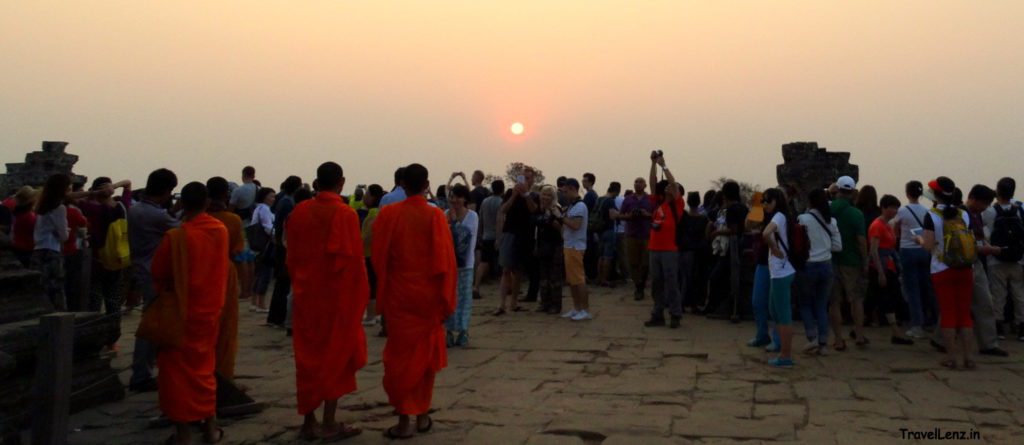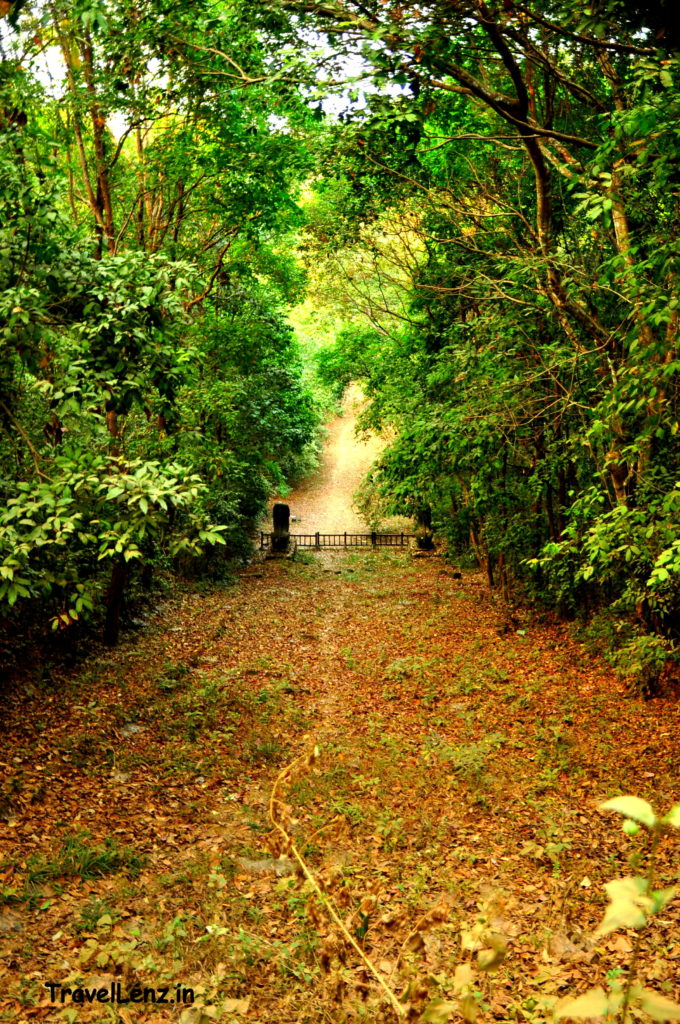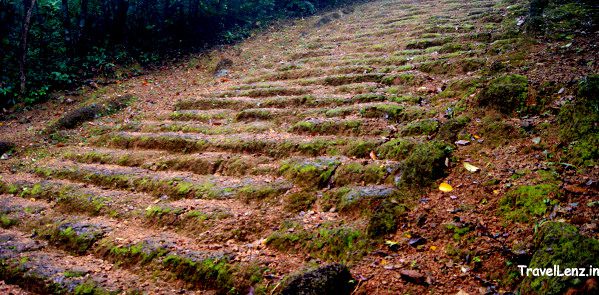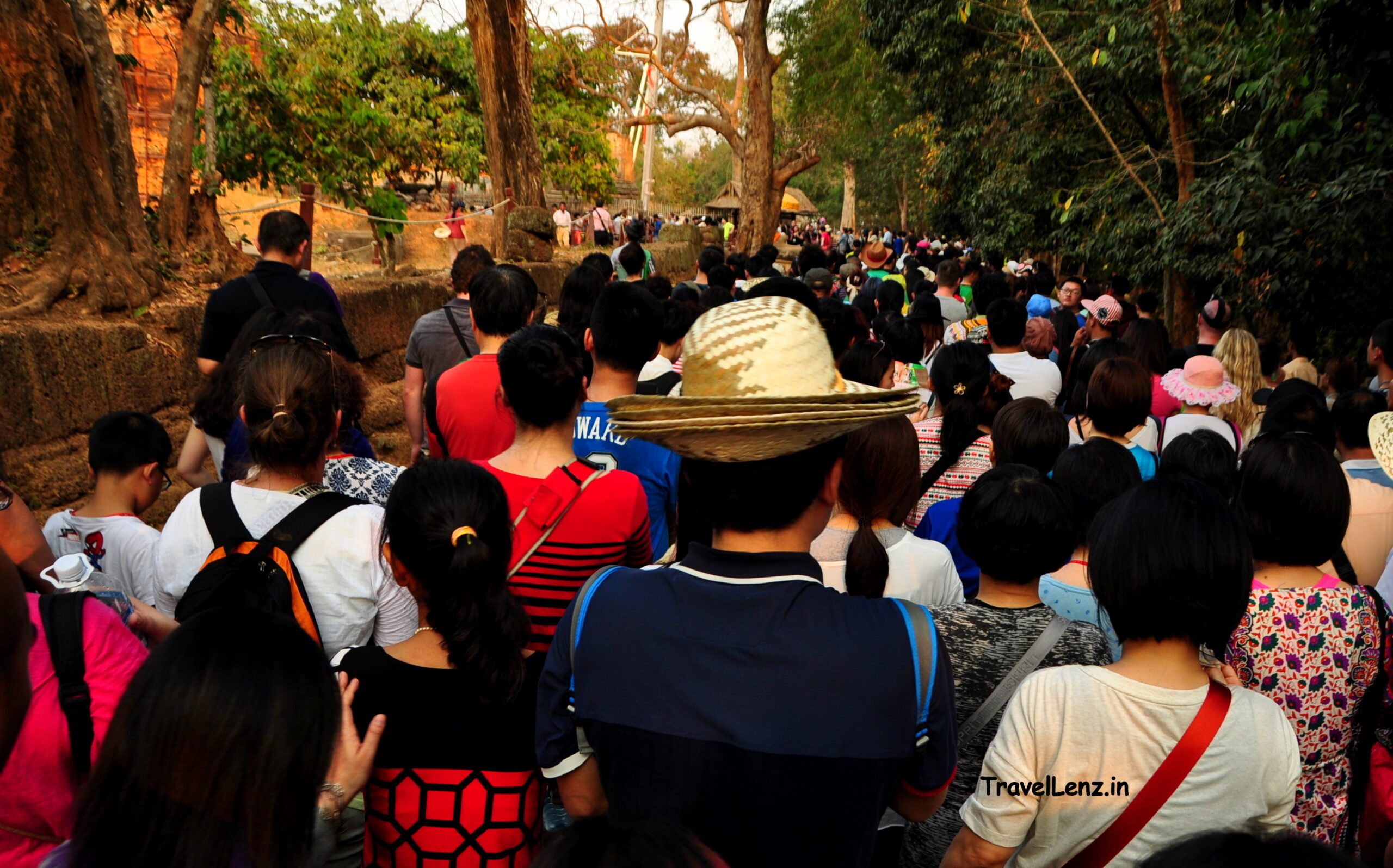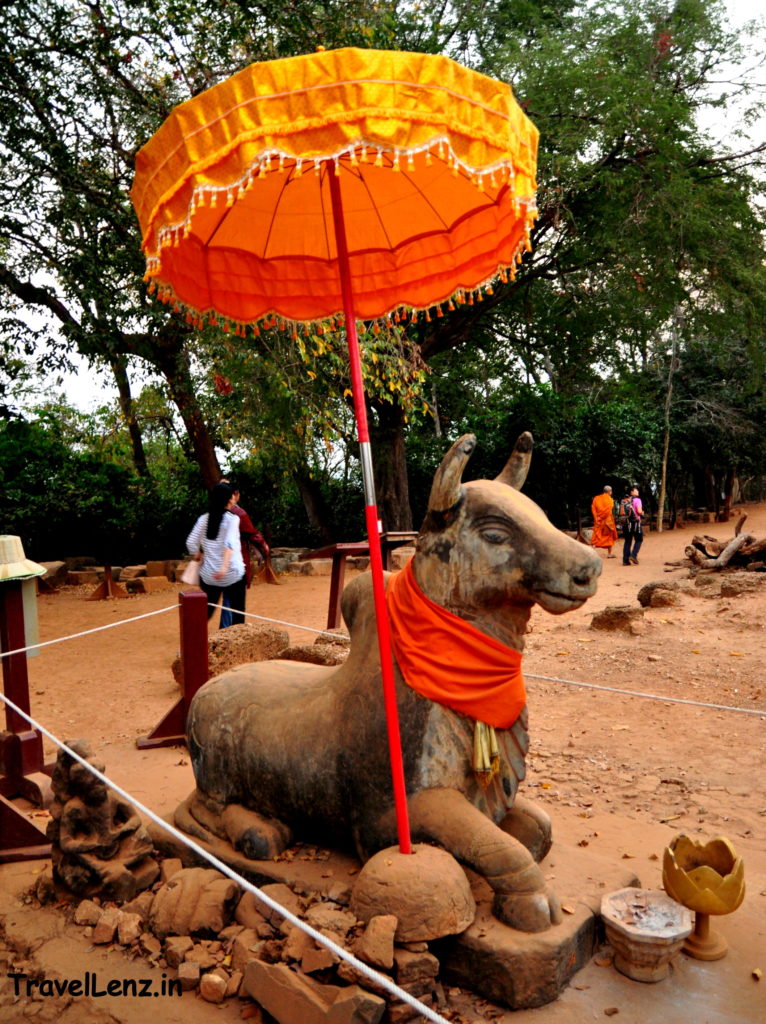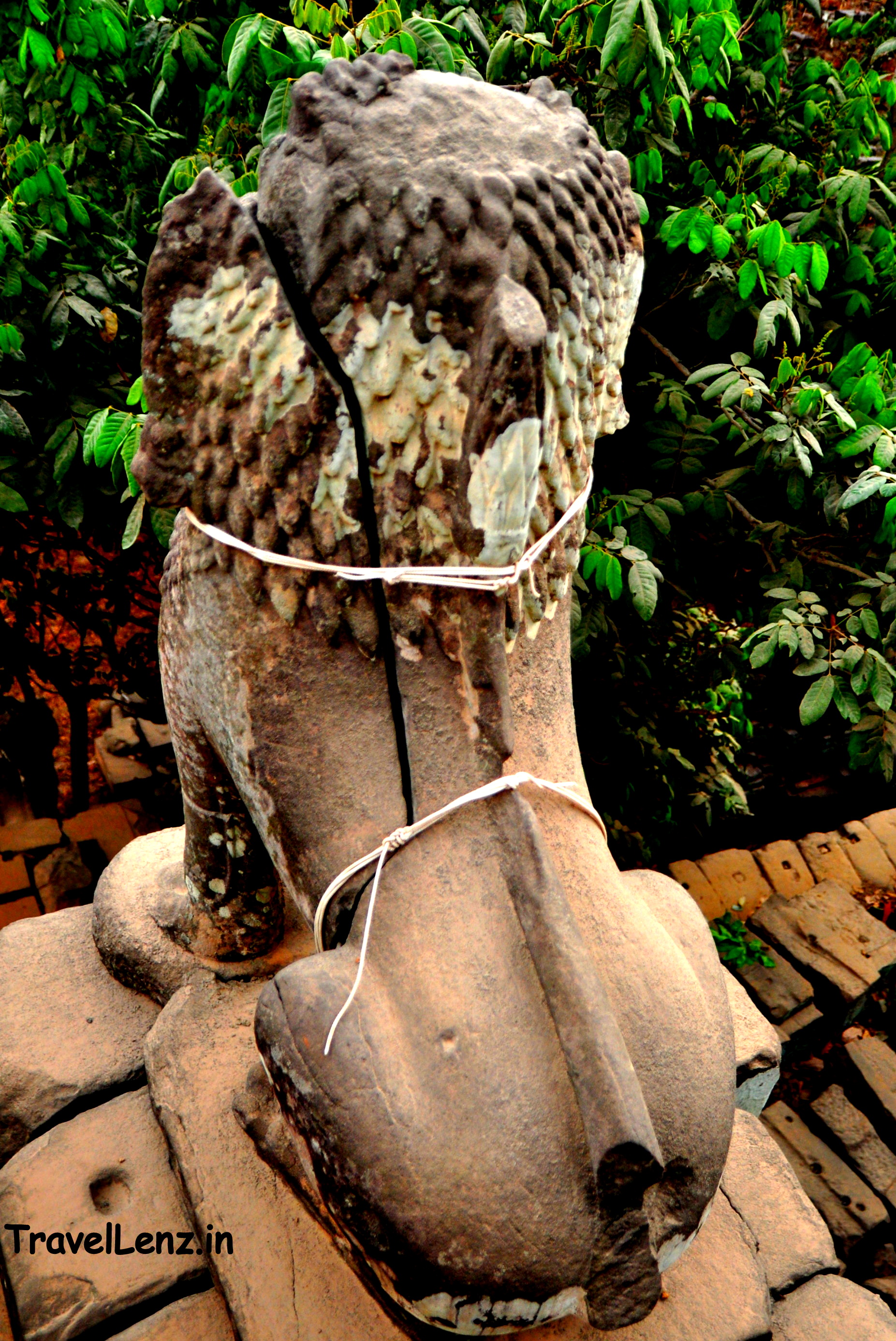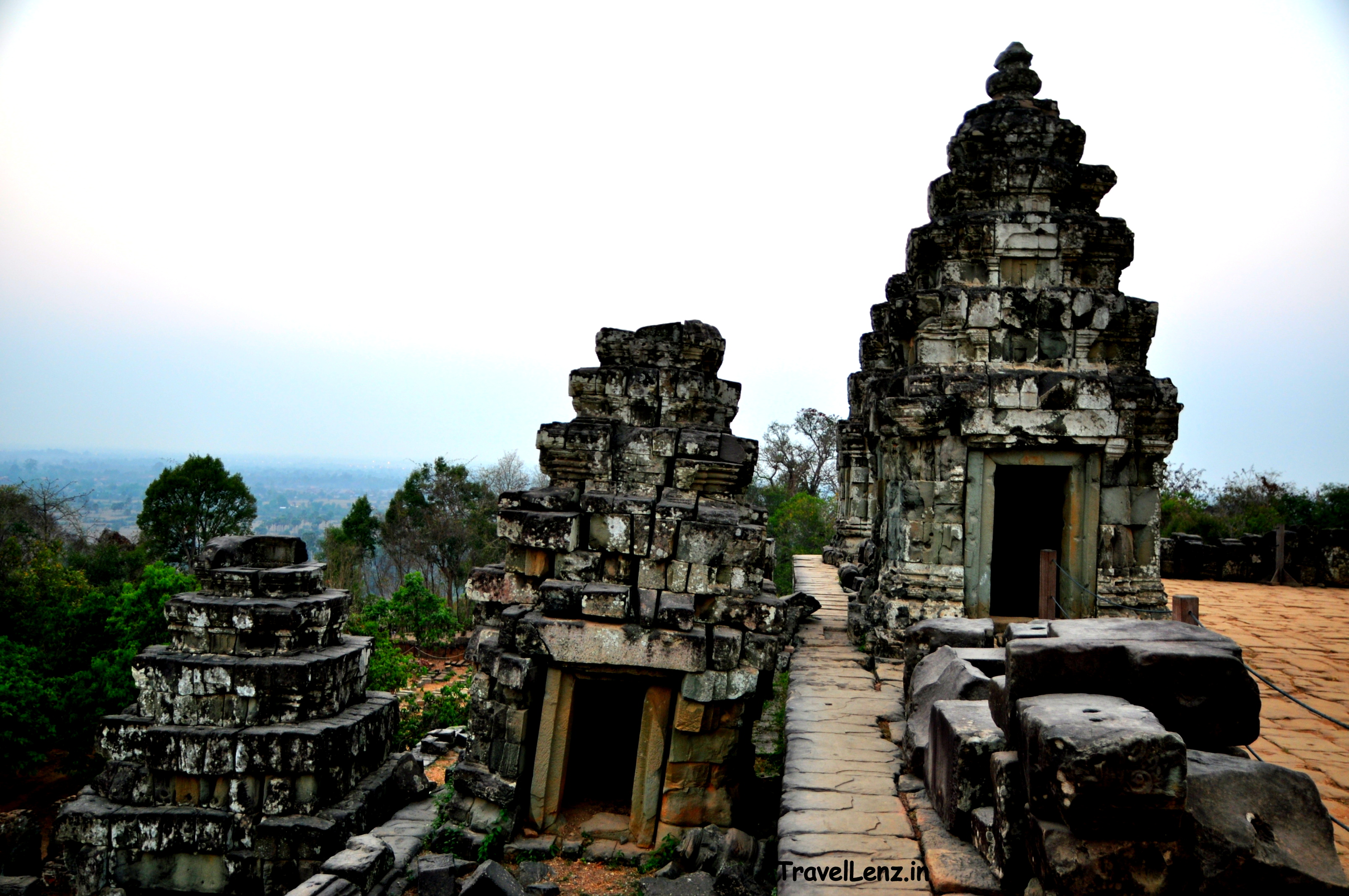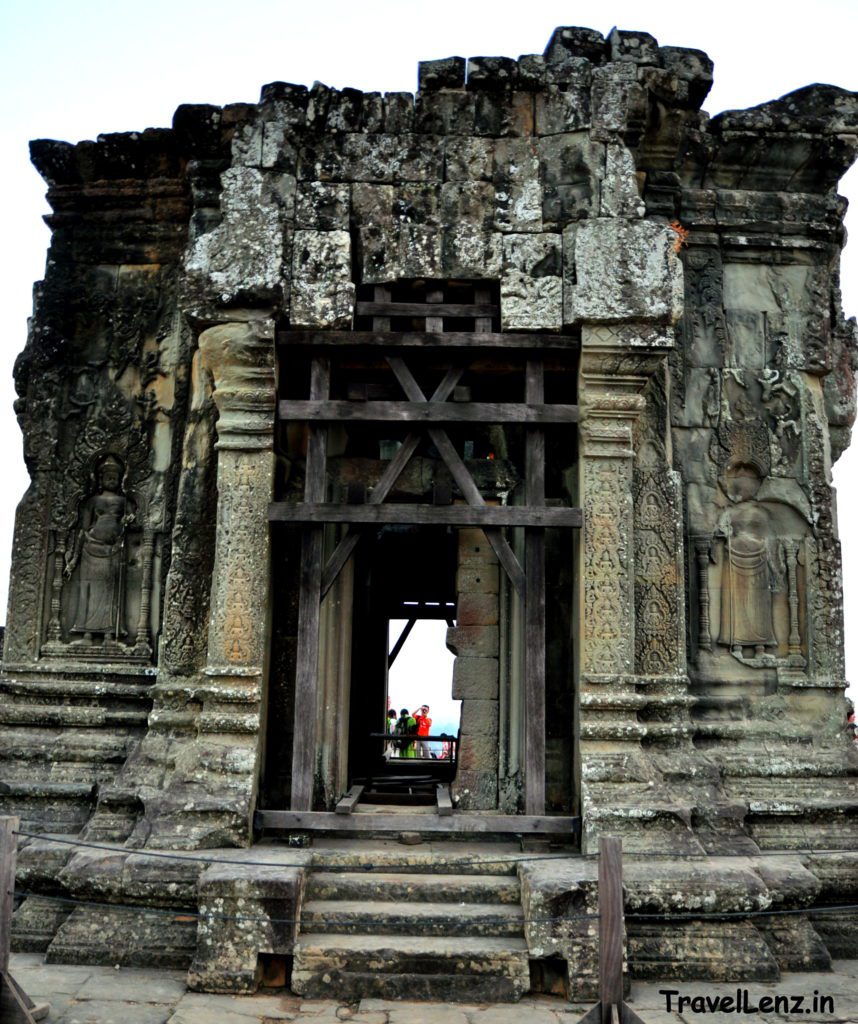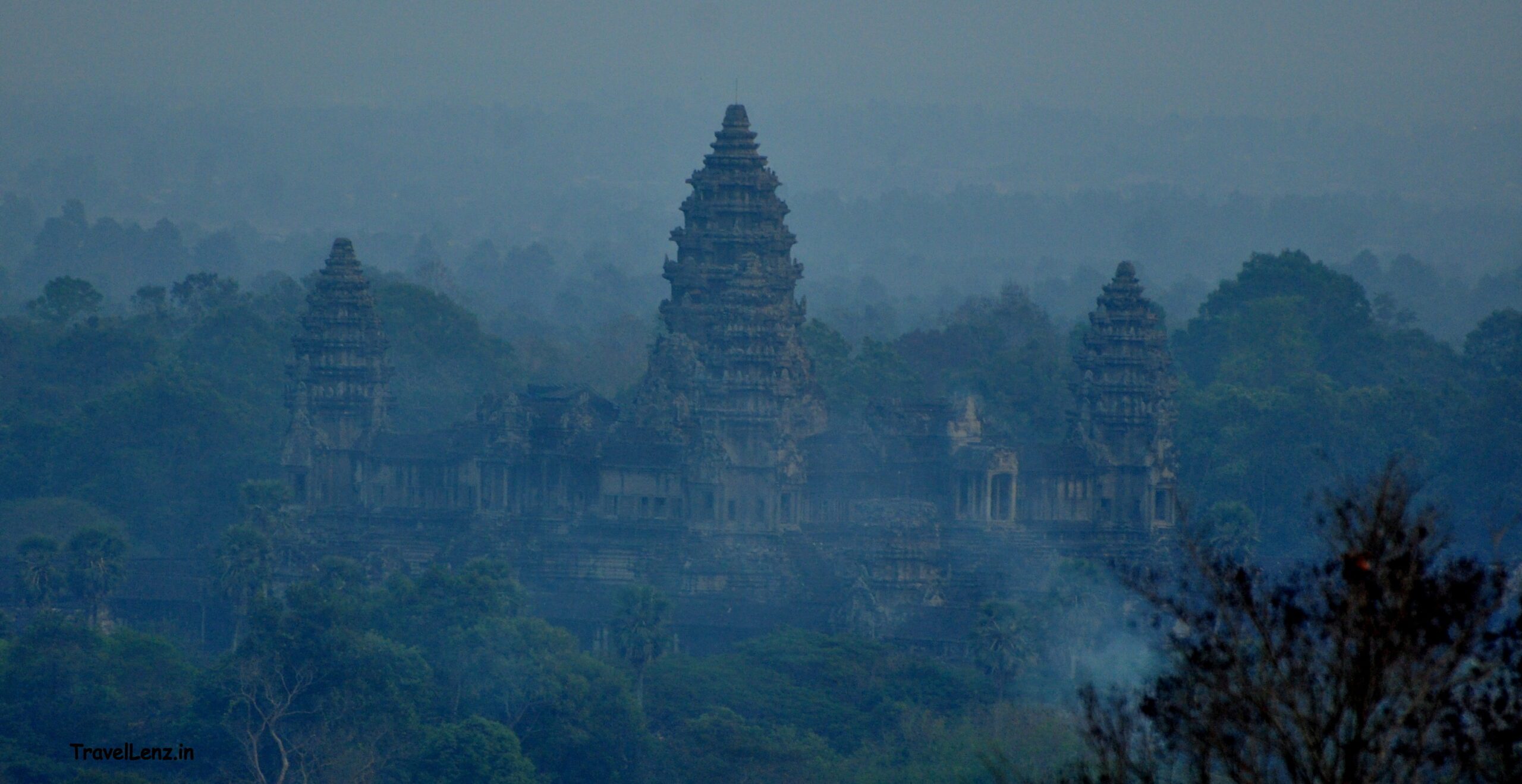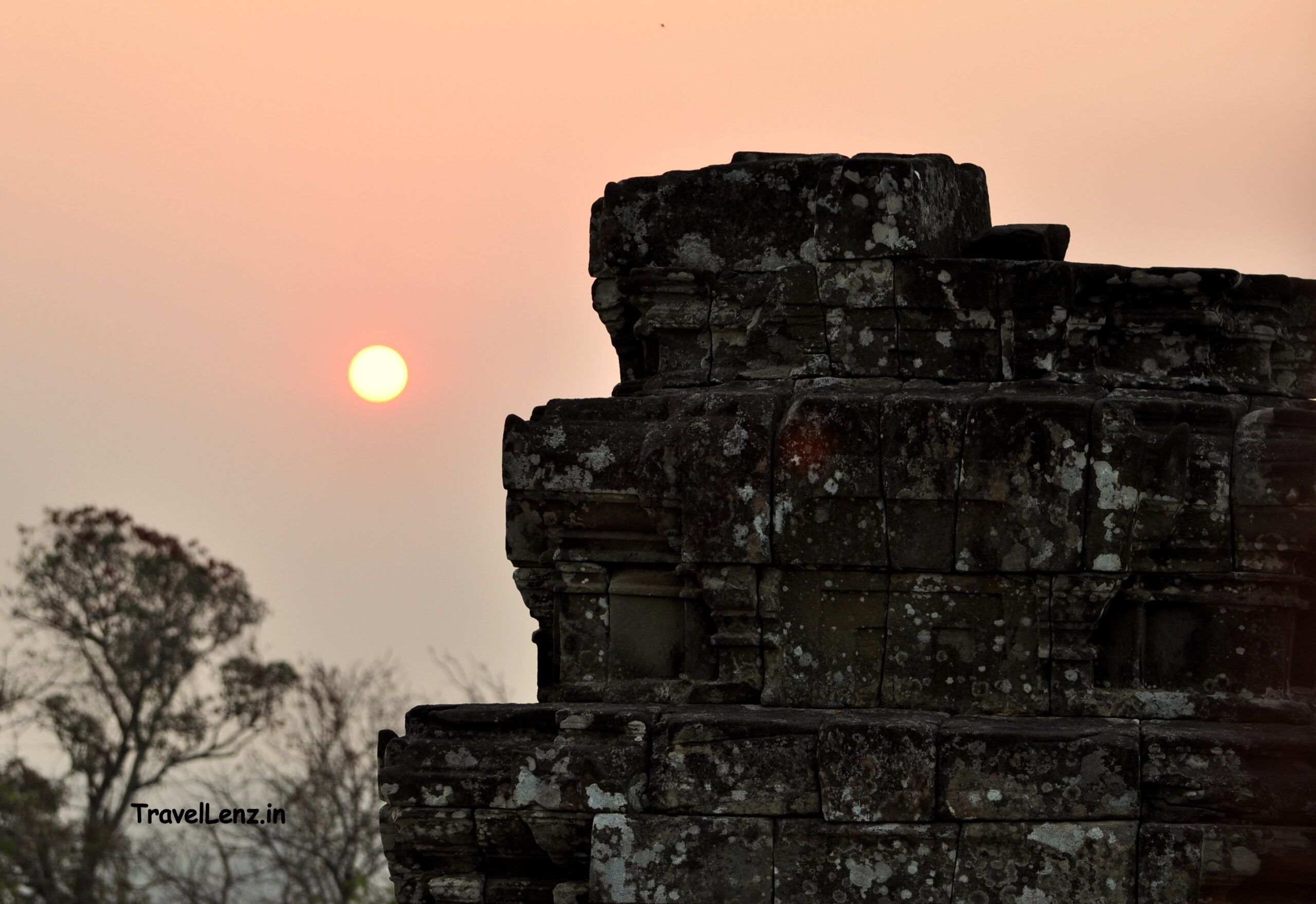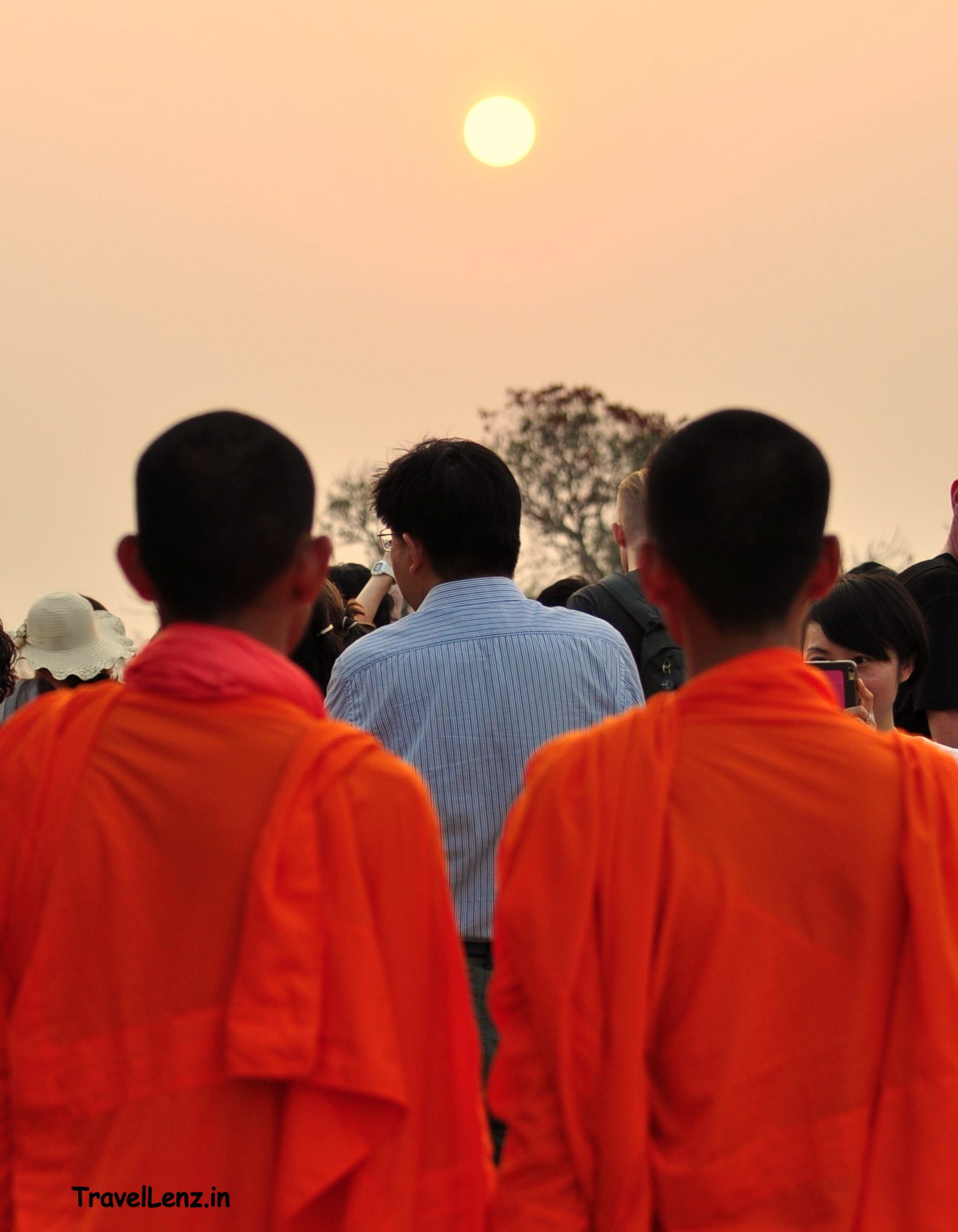Last Updated on May 21, 2021
Come evening and all the roads from the Angkor complex lead to Phnom Bakheng hill. Why? Well, this is where you get the most amazing views of the setting sun against the stunning backdrop of the Angkor Wat ruins. And did we mention that this is one of the most crowded temple complexes around sundown? Well, now we did.
Walking up the Bakheng hill
From Neak Pean it was a short drive to Phnom Bakheng. Tes parked his car at the parking lot near the foothill of Bakheng hill. To reach Phnom Bakheng temple, which is situated at the top of Bakheng hill, you could either walk up along a dirt path or take an elephant ride. We decided to hike. The path we took passed through a fairly thick wooded area.
As we walked along the dirt track, we found a steep and dangerous flight of laterite steps that were cut onto the side of the hill. The stairs were leading up through a thick cover of trees. Tes said that these steps were part of the original route from the base to the top of Phnom Bakheng. Now, a barricade stands in front of it and the steps are closed to the public. Incidentally, laterite stairways lead up from three sides of the hill. At the eastern entrance, two large guardian lions stood guarding the steps.
Sustainable visitor management
Phnom Bakheng temple is a magnet for sunset lovers and there are literally thousands of people taking up every available inch of space along the platforms and terraces. It is the highest spot in the Angkor complex and has thus become a victim of its own uniqueness.
Phnom Bakheng means strong hill in Khmer. Ironically, the overwhelming number of tourists visiting Phnom Bakheng during sunset has made this temple fragile and one of the most threatened monuments of Angkor. World Monuments Fund and the APSARA National Authority have set forth a few rules to manage the crowd at Phnom Bakheng.
Concerned about the hordes of tourists clambering upon the platforms and towers to watch the sun sink over ancient Khmer ruins, now only a maximum of 300 visitors are allowed at the top platform during sunset. Also, there are certain points on the hill where tourists can watch the sunset without going up to the temple.
A Hindu temple dedicated to Lord Shiva, Phnom Bakheng was the state temple of the Angkor region during the reign of King Yasovarman. We found a Nandi statue at the base of the temple.
There are steps on four sides of the temple, corresponding to each of the four cardinal directions, that are narrow and steep. On the eastern side, wooden planks are built over the steps with handrails for tourists.
A giant astronomical calendar
This temple is built like a pyramid with five ascending terraces. Seated lions flank each side of the steps on all five tiers. The fifth tier is topped by five main towers. There are a further 104 smaller towers all over the lower levels flanking each stairway and at the corners of the platforms.
The main central tower represents the axis of the world, while the 108 smaller towers represent the four lunar phases, each consisting of 27 days. Essentially, this temple is a giant astronomical calendar.
We found Devatas and Apsaras delicately carved into the niches of the towers.
Phnom Bakheng – Angkor’s favourite sunset point
From the top, you get a view of the Angkor Wat complex set against the Cambodian jungles. It also offers amazing views of the distant hills and the West Baray, though we couldn’t see any of this as it was hazy and cloudy.
As as we waited, the sun rays reflected on the ruins, in all the warm colours starting from yellow, orange, red, and pink.
It was kind of surreal to sit there with so many different people who had come here just to enjoy the view.
As a thousand shades of bright colours changed to copper and then black, we started our way down the hill. So what if we watched the setting sun with a gazillion other sunset seekers? What we wanted to do was to see the light fall over the temples themselves, and have them appear all mysterious and glowing.
And may be next time we’ll come here early in the morning when it’s cool, silent and not crowded.


